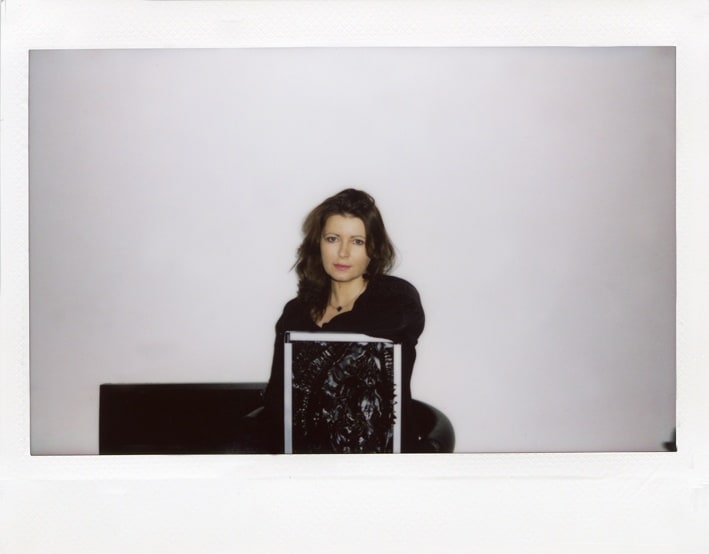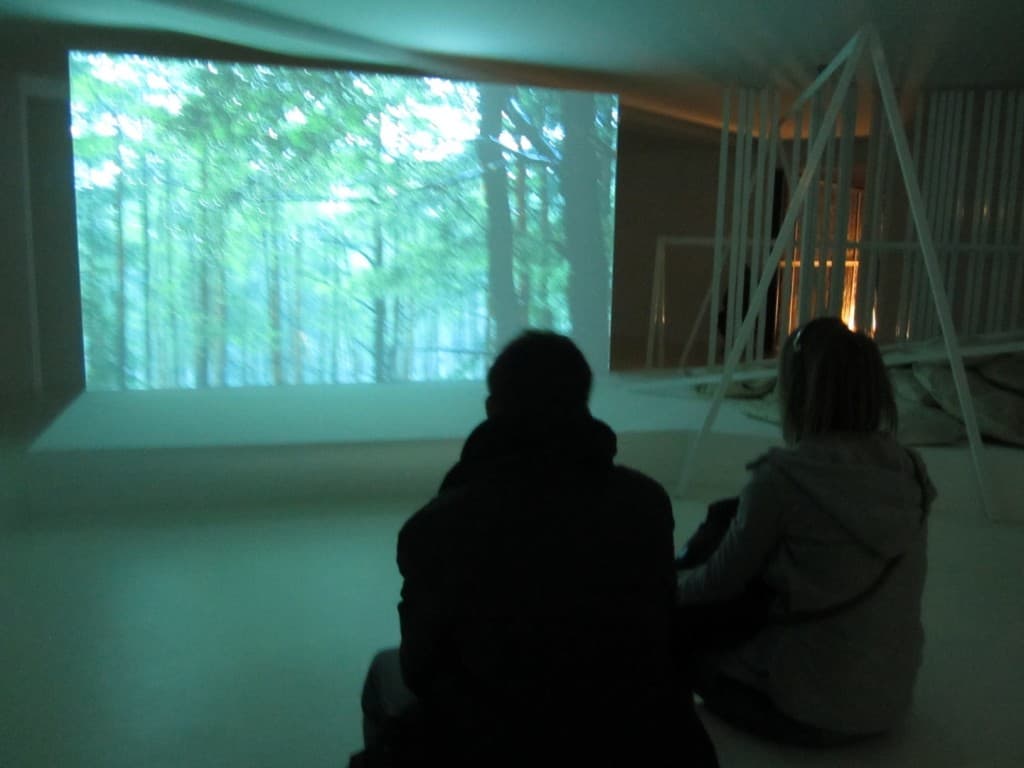The newest exhibition season inaugurated in mid-February at Palais de Tokyo, will present ten exhibitions in three guises under the common title L’Etat du ciel. Artists, curators, writers, philosophers will demonstrate their critical point of view on the contemporary condition of the human being and the world they inhabit, as well as the form employed to describe it. One of the responses to the presented themes is offered by an exhibition by Angelika Markul, a young Polish artist, who has been living in Paris since 1997. Her artistic sensitivity, which was discovered at Christian Boltański’s studio, is also focused around themes close to him: time, remembrance and the human being. Her newest exhibition at Palais de Tokyo is the first large exhibition of Polish art organised at this venue.
Markul’s exhibition has, quite untypically for Palais de Tokyo, a closed form. It is more like a one syncretic installation in which the key role is played by the scenography and the choreography enforced on the viewer. Markul’s exhibition can be found on the lowest level of the gallery and the very process of descending the spiralling stairs and walking through a labyrinth of corridors contributes to an atmosphere of disquiet. To get to the exhibition and enter the world of the artist, you have to push sizable doors. The five rooms tell us a story of the world as told by Markul. It represents an aesthetic essence of her minimalistic style.

Angelika Markul, Bambi à Tchernobyl, 2013-2014, a video installation with music by Franck Krawczyk, film, color, sound, 13’26” loop, sculptures (felt, wax, metal), courtesy Galerie Suzanne Tarasieve, Paris and Leto Gallery, Warsaw, photo Marc Domage
The Bambi at Chernobyl installation, which opens the voyage, may be described as a total work. The showing of a short film recorded by the artist during the three days she spent on the scene of the 1986 catastrophe is arranged in a white room with a low ceiling. The screen, placed on a platform, has been supported with a white structure made of metal rods, some of them laying in shapeless forms, which seem to have been squashed under falling beams. The apparent chaos of white lines reconstructs geometric forms, which were filmed by Markul: spiky rooftops, falling trees in the forests in the vicinity of Chernobyl and the expanses of white snow covering the scenery. The camera shows the viewer the endless landscape of a deserted city and a virgin forest. The shots are fractured with shots of bright light. It alarms and irritates. The impact is reinforced with a symphony by Franck Krawczyk, inspired by music from the Disney film Bambi. A solidly framed radioactive plant brought from the set hangs on the wall. All this contributes to a futuristic post-catastrophic imagery, it is a depressing vision of all-encompassing nature and fate, to which the human being is totally subjected .
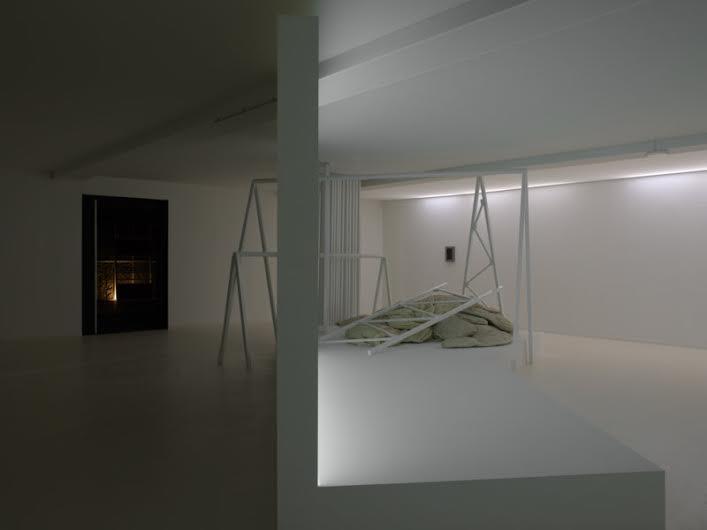
Angelika Markul, Bambi à Tchernobyl, 2013-2014, a video installation with music by Franck Krawczyk, film, color, sound, 13’26” loop, sculptures (felt, wax, metal), courtesy Galerie Suzanne Tarasieve, Paris and Leto Gallery, Warsaw, photo Marc Domage
Piece du Silence (Room of silence or The silent room) which follows is just a temporary stopover or maybe a voyage in time. Markul is receding, going deep into the ground like an archaeologist. For that reason Gorge du Diable a video of Iguazu Falls is played backwards, it is a leap into the past. The artist turns back the tons of water which have been flowing through the waterfall for thousands of years, to find the remnants of the past world – shapeless forms, half animal half plant remains of fallen worlds. Markul creates them from her own imagination and places them on the platform next to the screen, because the film for her is also a sculpture.
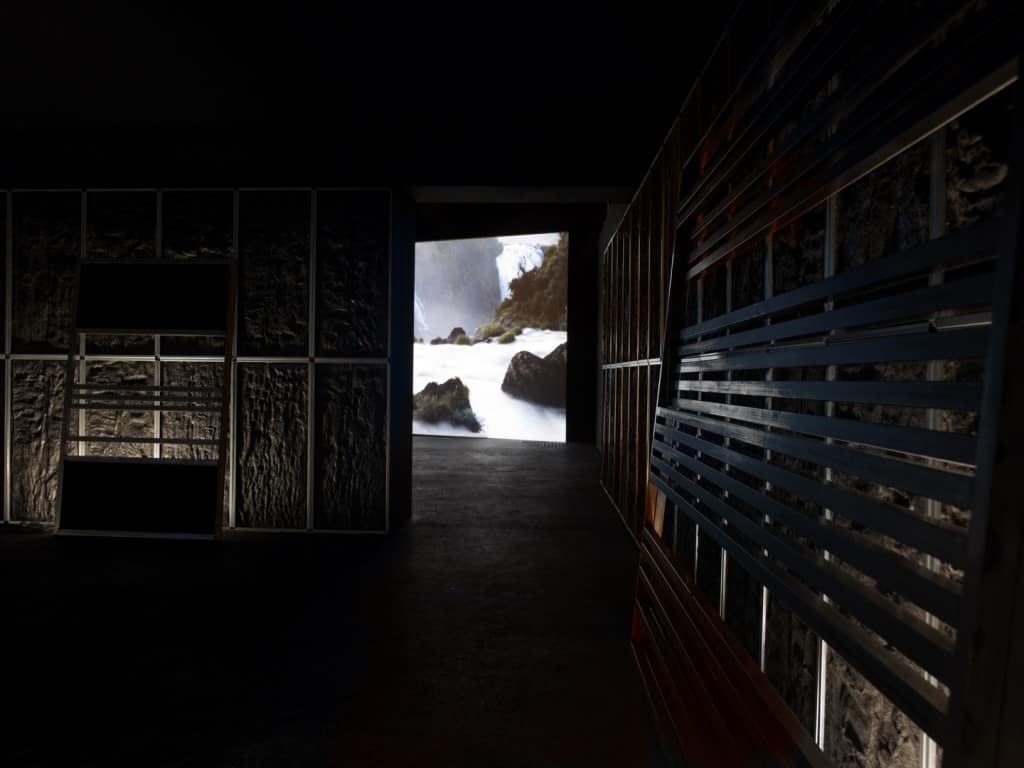
Angelika Markul, Pièce du silence, 2013-2014, installation felt, wax, steel plates, fluorescent tubes, courtesy Galerie Suzanne Tarasieve, Paris and Leto Gallery, Warsaw, photo Marc Domage
And where is the human being? You can’t see them. Will they too soon become another layer of soil? Will nature conquer? What home may they find in that? Markul seems to be a stoic wise man observing the lost viewer with her finger pointing to the sky. It is where the past civilisations looked to . And it is where people still look to, armed with increasingly powerful machines allowing us to see your past in the stars and to build a future. The biggest observatories of the sky are built in Chile. It is where it is the clearest and it is where a long tradition of native mythologies comes from, for whom the cosmos, the sky or simply speaking “that which is up there” is another stage of the journey of the human being, who stays on earth but for a moment. It is their Terre de depart (Land of Departure). The 400 miliardes de planetes video is a short recording of a Chilean telescope preparing for the observation of the sky, which the viewer does not get to see. A feeling of want, frustration and curiosity emerges.

Angelika Markul, 400 milliards de planètes, 2104, video, color, sound, 4’27” loop
courtesy Galerie Suzanne Tarasieve, Paris and Leto Gallery, Varsovie, photo Marc Domage
Foil, animal and plant remains, darkness, fluorescent lamps barely shedding light on elements chosen by the artist create an otherworldly landscape, inhospitable, inhuman. Dominated by powers stronger than us. These are the forces to which the artist succumbs when making her films. Subjected to radiation in Chernobyl or Fukushima, pushed by the crowds by Iguazu waterfall or in Bagdad, she records everything she manages to perceive. Physical sacrifice or harm to her health are not relevant for the end result of her work. But she does not expose herself to danger. The transgressive experience is with her and it is projected by her onto her installations. The space created by Markul is disquieting. It does not leave the viewer in meditative peace. Human fear is the lifeblood of Markul’s works, as it is the lifeblood of a man in constant crisis. Fear of the forces of nature, fear of being forgotten, fear of oneself, fear of auto-destruction, and finally fear of the future. In the end human beings are alone in the face of their fate and in the face of nature. And nature in Markul’s works is very powerful, it becomes the horror of humanity. It covers the impenetrable forest of Chernobyl with snow, it thrives over the houses in the town of Prypeć, covers the past with masses of water and then it vanishes with the speed of light. And paradoxically it becomes the hope of the human being. History turns a full circle.
Bambi in Chernobyl or Gorge du Diable, the whiteness of the Chernobyl snow and the blackness of the dug out remains which are thousands of years old, remind the viewer about their heritage. People in their existential loneliness, look to the past. While the future, seen in the stars is unknown, so the artist limits only to showing it only as a video recording. Markul’s l’etat du ciel is depressing, marked by evolution and natural selection. The cyclical concept of time which may be appreciated in her works presents us with hope, but also with a vision of future catastrophes. Hundreds of years of history of human civilisation steeped in incessant conflicts aiming to strengthen the areas of influence (of all kinds: cultural, religious, economic…) are but a moment, a minute on Markul’s clock. It is not what counts, it is not what will decide our fate.
Translation: Ewa Tomankiewicz
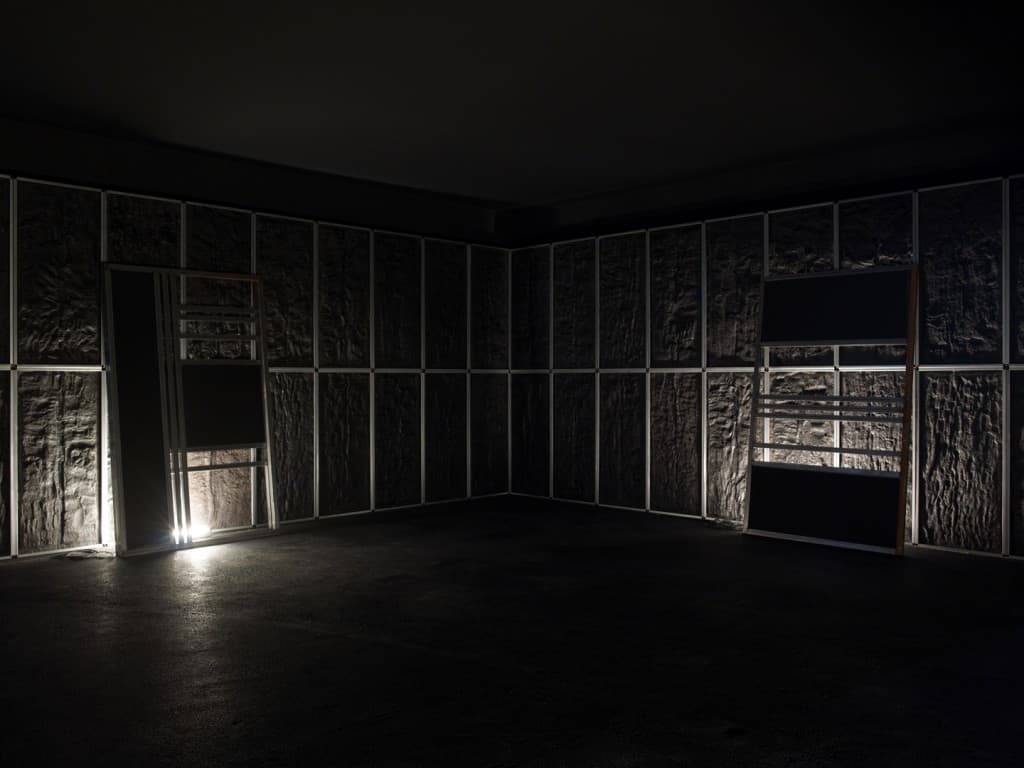
Angelika Markul, Pièce du silence, 2013-2014, installation
felt, wax, steel plates, fluorescent tubes
courtesy Galerie Suzanne Tarasieve, Paris and Leto Gallery, Warsaw, photo Marc Domage
http://vimeo.com/72030118
Angelika Markul,Terre de départ, courtesy of Artist, presented at Muzeum Sztuki, Lodz in 2013.


